 This is the third installment of the Evacuation Preparedness Kit Series. The first post, on Evac Prep Basics is here, and the second post, which introduces the Evac Prep Master List is here.
This is the third installment of the Evacuation Preparedness Kit Series. The first post, on Evac Prep Basics is here, and the second post, which introduces the Evac Prep Master List is here.
In this post we’ll be discussing the items in the different categories on the Master List. If you haven’t seen the list yet, you can access it here.
As we go through these categories, keep in mind that your 72 hour kit will be more like packing for an extended hiking trip whereas your Evacuation Kit will be more like packing for an extended camping trip. Also keep in mind that redundancy and the ability to shed your larger kits and still be able to survive with your smaller kits is critically important. You may find yourself in a scenario where you have bugged out with your Evacuation Kit, but for whatever reason you have to ditch most of it and go on foot. Your G.O.O.D bag had better be able to support you while your on foot. Potentially, you could have to drop supplies all the way down to your EDC and be able to survive off the items in your pockets. Redundancy across your kits is paramount.
Pre-Planning
This is a topic we’ll cover in more detail in a later post, but it’s important to start off your evacuation planning by considering several scenarios – what you take with you is only one of the considerations!
Bug Out Vehicles
The first thing to know is, what vehicle(s) will you be evacuating in? Your Bug Out Vehicle (BOV) is going to be a critical part of your successful evacuation since it’s what will get you there! We’ll have an in depth post on this later in the series but you need to consider comfort for all those riding, gear storage, fuel capacity, reliability and so on. If you are able, it’s a great idea to have a vehicle that you can hitch a trailer (camping or regular) to (or an RV). This way you can pre-pack your gear into the trailer so everything is ready to go at a moments notice. If you don’t currently have an adequate BOV, you may consider starting to save up for one and looking for good deals.
Timing
Getting out ahead of the crowds is an important part of evacuating. You do NOT want to be in the situation pictured at the top of this post! By planning ahead, pre-packing, pre-staging your gear in your trailer, etc. you can get a huge jump on the un-prepared masses and Get Out of Dodge before the traffic jams start. Meet with your family, plan rally points, make sure everyone knows what will happen in an evacuation.
Bug Out Location (BOL)
Where are you going to go? You might head to a friends place out of town or state. You may head for the mountains. Where you go is going to depend on lots of factors including what the emergency is that made you bug out. Plan ahead and know where you can go. Many preppers buy small (or large) parcels of land away from civilization and turn it into a retreat. This may or may not mean building a cabin, building a storage facility, etc. But having a retreat provides you with a location to get to and a place where you can pre-position some of your supplies.
You may end up going to a town just outside the danger zone and stay in a hotel or campsite there. If you’re doing this, plan on having ways to look up phone numbers etc. so you can call ahead and find vacancies to reserve. Of course, right outside the danger zone will probably be cramped and crazy. You may want to head another 30 miles or so out. With this plan, many preppers will pre-stage supplies in small storage units or at friends houses along the way.
Route Planning
Once you know where you’re going to go and you know your family rally points, plan out how to get there. Consider typical traffic, where traffic jams may occur in an evacuation, types of roads, etc. The best plan will avoid the masses as much as possible. Try to figure out a route using uncommon roads to get out of town and hit the highway quickly. If you can’t avoid high traffic areas, plan multiple optional routes to work around traffic so you can pick an alternate based on the situation.
Comfort
We’ll talk about entertainment later, but consider the comfort of the passengers in your BOV. You don’t want kids packed unsafely in between storage crates in the back seat. You’ll want to have games and books for the kids, some snacks, water, etc. Consider how long a drive it is to your BOL and plan a trip kit accordingly. Then be prepared for the 2,806 “Are we there yet?”. You’ll want to keep them from getting bored but also from getting scared. Also consider weather – if it’s hot you’ll want extra water, if it’s cold you’ll want extra blankets. You’ll want to avoid wasting gas idling in a traffic jam just to run the heater/AC.
The List
Keep in mind (or re-read the second post in this series) that the purpose of this list is to make sure you’ve considered everything. You should be paring down the list to what you personally feel you need to have. And so, on to the Category review.
Food
 The majority of the food types listed are dry, high in energy types of food. Most of them are lightweight and will keep for extended periods of time. Note that many of them require water to be added to them – you should keep this in mind when you are deciding your water requirements. There is a variety of foods listed, these are suggested possibilities. You should build a list of the foods you want to take with you and stock on those (don’t feel like you need to get each item on the list).
The majority of the food types listed are dry, high in energy types of food. Most of them are lightweight and will keep for extended periods of time. Note that many of them require water to be added to them – you should keep this in mind when you are deciding your water requirements. There is a variety of foods listed, these are suggested possibilities. You should build a list of the foods you want to take with you and stock on those (don’t feel like you need to get each item on the list).
Your Evacuation Food Crate
The Canned foods on the list, which include the liquid foods like honey, should be stored in a box or crate (labeled ‘Food’) and made ready to go. These are the heavier foods and you won’t want to carry them around in a BOB. The fragile foods like crackers should also be stored in your food crate along with whatever amounts and types of other foods you feel you need to evacuate with. Keep in mind that your Evac Kit is your top comfort level, you’re keeping stuff to make several meals on the road – you don’t have to be over-limiting in what you’re willing to pack.
Bug Out Bag Food Packet
 The food you store in your BOB should be the highest in energy/protien that you can get. You’ll want enough to have a few meals with and also several snacks. Gum and Hard Tack candies are great for you BOB. I personally keep several packets of Ramen Noodles and oatmeal in my BOB for meals along with a few MREs. While your BOB will sustain you for a couple days, you’re likely going to need to supplement your food supply with hunting and foraging. Make sure you have the skills and tools to do so.
The food you store in your BOB should be the highest in energy/protien that you can get. You’ll want enough to have a few meals with and also several snacks. Gum and Hard Tack candies are great for you BOB. I personally keep several packets of Ramen Noodles and oatmeal in my BOB for meals along with a few MREs. While your BOB will sustain you for a couple days, you’re likely going to need to supplement your food supply with hunting and foraging. Make sure you have the skills and tools to do so.
EDC Food
 In your EDC Kit, you should have high energy foods that you can eat on the run. I recommend bouillon cubes for their high protein value along with some jerky and a protein bar or two. A pack of gum and a few pieces of hard tack candy are nice as well. If you are required to live off of your EDC Kit, you should have or develop foraging and hunting skills as well – you won’t be able to keep enough food to last you long. Your EDC Kit should include any tools or items you will need for foraging and hunting.
In your EDC Kit, you should have high energy foods that you can eat on the run. I recommend bouillon cubes for their high protein value along with some jerky and a protein bar or two. A pack of gum and a few pieces of hard tack candy are nice as well. If you are required to live off of your EDC Kit, you should have or develop foraging and hunting skills as well – you won’t be able to keep enough food to last you long. Your EDC Kit should include any tools or items you will need for foraging and hunting.
If you’re planning to take a pet with you if you have to evacuate, don’t forget to store some food for several days for them as well!
Water
 You won’t last long at all if you haven’t planned for water. Water preparation is one of the most important things in your Evacuation plans! If you’re going to overkill anywhere, this is the category to do it in!
You won’t last long at all if you haven’t planned for water. Water preparation is one of the most important things in your Evacuation plans! If you’re going to overkill anywhere, this is the category to do it in!
We’ve covered water preparedness at home, but for Evacuation it’s a bit of a different thing. Depending on how many people you’re going to be supporting, I personally would start off with a couple 5-7 gallon jugs full of water that can be thrown in a trailer or truck during your evacuation loading. You can store these full or empty – if you store them full be sure to rotate the water every 6 months (follow other guidelines for safe water storage as well). The key here is to have something prepared so that in an evacuation you can grab your water and go.
You’ll also need to make sure you have ways of carrying water as you work down through the BOB and EDC Levels. Water bottles, canteens and hydration bladders work well in your BOB. It is also a good idea to keep several store bought bottled water bottles in your Vehicle Kit, Office Kit and Bug Out Bag. An empty hydration bladder is very compact, I suggest keeping one rolled up in your EDC Kit as well.
Water Filters
 There are lots of different water filters available and I would strongly recommend you have several of them in your preps. I suggest keeping a really good and decent sized one in your Evacuation Food Kit so that when you’re throwing everything in the trailer you’ll know you have it. With this filter, keep in mind that the purpose of it is to refill those 5 gallon jugs – so make sure it’s easy and fast to use!
There are lots of different water filters available and I would strongly recommend you have several of them in your preps. I suggest keeping a really good and decent sized one in your Evacuation Food Kit so that when you’re throwing everything in the trailer you’ll know you have it. With this filter, keep in mind that the purpose of it is to refill those 5 gallon jugs – so make sure it’s easy and fast to use!
 You also need to make sure you have a separate water filter in your Bug Out Bag. The purpose of this water filter is to allow you to fill a container and take the container with you. There are some great bottle filtration systems that allow you to fill your water bottle and it is filtered as you drink it. I carry two of these in my personal BOB.
You also need to make sure you have a separate water filter in your Bug Out Bag. The purpose of this water filter is to allow you to fill a container and take the container with you. There are some great bottle filtration systems that allow you to fill your water bottle and it is filtered as you drink it. I carry two of these in my personal BOB.
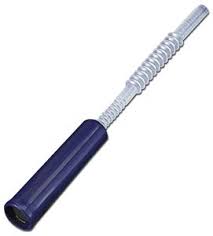 You’ll also want to keep a Straw Filter in your EDC gear. These filters are ultra compact and let you drink from almost any water source. The one pictured can also adapt to a hydration bladder. If you’re on the move with only your EDC you’ve got to be able to consume water safely!
You’ll also want to keep a Straw Filter in your EDC gear. These filters are ultra compact and let you drink from almost any water source. The one pictured can also adapt to a hydration bladder. If you’re on the move with only your EDC you’ve got to be able to consume water safely!
 If you’re using a hydration bladder, there are inline filtration systems you can get that allow you to fill them from almost any source and filter them at consumption time. (If you’re doing this, make sure you know which bladders have had unfiltered water in them and don’t use them for clean water!)
If you’re using a hydration bladder, there are inline filtration systems you can get that allow you to fill them from almost any source and filter them at consumption time. (If you’re doing this, make sure you know which bladders have had unfiltered water in them and don’t use them for clean water!)
Hydration bladders can be stored/used independently or incorporated into day packs or backpacks where the drinking tube allows you to use them without removing them. This makes them ideal for almost any of your Kits.
Fuel (Automotive)
If there is cause for evacuation, history has shown us repeatedly that fuel almost instantly become a rare commodity. If you’re not already, become accustomed to keeping your vehicle, especially your Bug Out Vehicle (BOV), full of gas as frequently as possible. Consider your half tank marker to be your empty marker and fill it back up!
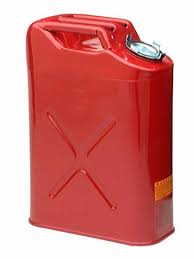 If you have a 20 gallon tank on your car, store six 5 gallon cans full of gas at home. This gives you 10 gallons to top off your tank with when you bug out (preferably you’ll be ahead of the game and be able to do this at the gas station and take that 10 gallons with you) and allows you to take a full tank of gas with you.
If you have a 20 gallon tank on your car, store six 5 gallon cans full of gas at home. This gives you 10 gallons to top off your tank with when you bug out (preferably you’ll be ahead of the game and be able to do this at the gas station and take that 10 gallons with you) and allows you to take a full tank of gas with you.  If you’re able to, consider storing even more cans of gas at home. A good way to store this away from your house is to dig a trench at the back of your property, put the cans in it and cover the trench with plywood (to hide it, throw a little dirt over the plywood and incorporate a flower garden around it). Be sure to use Sta-Bil to keep your gas from going bad. We’ll have a post going into this in depth shortly.
If you’re able to, consider storing even more cans of gas at home. A good way to store this away from your house is to dig a trench at the back of your property, put the cans in it and cover the trench with plywood (to hide it, throw a little dirt over the plywood and incorporate a flower garden around it). Be sure to use Sta-Bil to keep your gas from going bad. We’ll have a post going into this in depth shortly.
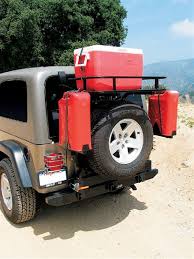 Be sure you have a plan for carrying your gas with you in your BOV so that when you evacuate you’re able to grab the gas cans and go. There are external carrying systems you can get for your vehicle, or you can just stow them in a trailer or the back of a truck. Planning to store gas inside the vehicle you’re driving is a bad idea as there is a good chance that fumes can accumulate in the car making everyone sick.
Be sure you have a plan for carrying your gas with you in your BOV so that when you evacuate you’re able to grab the gas cans and go. There are external carrying systems you can get for your vehicle, or you can just stow them in a trailer or the back of a truck. Planning to store gas inside the vehicle you’re driving is a bad idea as there is a good chance that fumes can accumulate in the car making everyone sick.
It’s also a good idea to keep a siphon system or just a length of hose in your evacuation kit (and your Vehicle Kit). In a pinch you may need to get fuel out of a different vehicle and into your BOV.
Shelter/Bedding
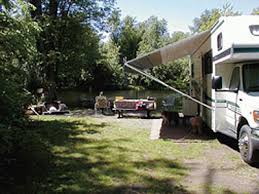 Your Bug Out Vehicle (BOV) might be an RV, Camp or other Trailer that you can sleep in – or it may be a little car that the last thing you’d never want to sleep in (a later post in this series will discuss BOVs).
Your Bug Out Vehicle (BOV) might be an RV, Camp or other Trailer that you can sleep in – or it may be a little car that the last thing you’d never want to sleep in (a later post in this series will discuss BOVs). Either way, it is a very good idea to have a large tent that will comfortably house your family and much of your gear for several days in your Evacuation Kit. You’ll also want to have a box or crate pre-packed with bedding (blankets, sleeping bags, pillows, etc) so you can just grab it and go. Be sure to include tarps, ropes, tent stakes, etc in your Evac Kit. Your shelter is a critical part of successful evacuation, spend a bit of time and effort making sure it is all there and packed properly.
Either way, it is a very good idea to have a large tent that will comfortably house your family and much of your gear for several days in your Evacuation Kit. You’ll also want to have a box or crate pre-packed with bedding (blankets, sleeping bags, pillows, etc) so you can just grab it and go. Be sure to include tarps, ropes, tent stakes, etc in your Evac Kit. Your shelter is a critical part of successful evacuation, spend a bit of time and effort making sure it is all there and packed properly.
Bug Out Bag Shelters
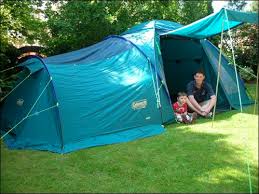 Assuming you don’t have your Evac Kit shelter with you, your BOB should contain a backpacking tent and sleeping bag or, if you plan to rough it a bit, a tarp can serve just fine as a shelter. If you’re using a tarp for a shelter, make sure you practice building different types of shelters with it – bugged out is not the time to learn!
Assuming you don’t have your Evac Kit shelter with you, your BOB should contain a backpacking tent and sleeping bag or, if you plan to rough it a bit, a tarp can serve just fine as a shelter. If you’re using a tarp for a shelter, make sure you practice building different types of shelters with it – bugged out is not the time to learn!
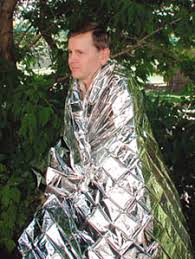 For EDC, it’s a good idea to carry an Emergency (or Space) Blanket with you. They are extremely compact and will give you something to wrap up in during the night. It is a good idea to also learn survival skills that will allow you to create a shelter while on the run, and then carry the tools with you to do so.
For EDC, it’s a good idea to carry an Emergency (or Space) Blanket with you. They are extremely compact and will give you something to wrap up in during the night. It is a good idea to also learn survival skills that will allow you to create a shelter while on the run, and then carry the tools with you to do so.
In our next segment, we continue working through the categories in our master list. If you have anything to add about these categories, please do so in the comments!


This is such a complete and comprehensive list, I don’t think I could add anything to it! Great post.
This is such a complete and comprehensive list, I don’t think I could add anything to it! Great post.
Great Post Utah. That’s a great list.
Great Post Utah. That’s a great list.
does anyone have access to the master list in a printable format? I cannot print this. Please email me at [email protected]. thank you
does anyone have access to the master list in a printable format? I cannot print this. Please email me at [email protected]. thank you
Just came and read, this is wow! I was seek from many blogs, but here is the best, I love it.
Just came and read, this is wow! I was seek from many blogs, but here is the best, I love it.
I'll back again for sure, thanks for great article :D
that is such a hassle..
what a coincidence for same autos to bump around in highway…